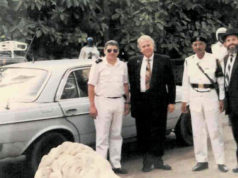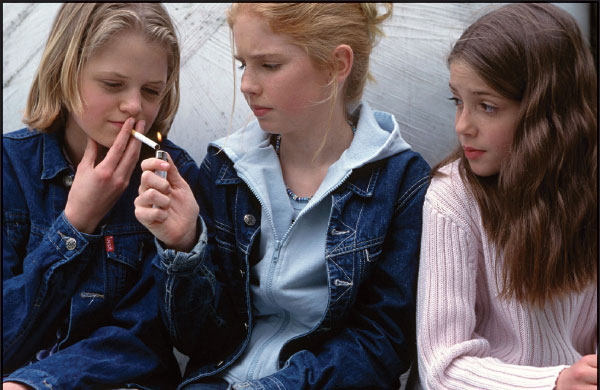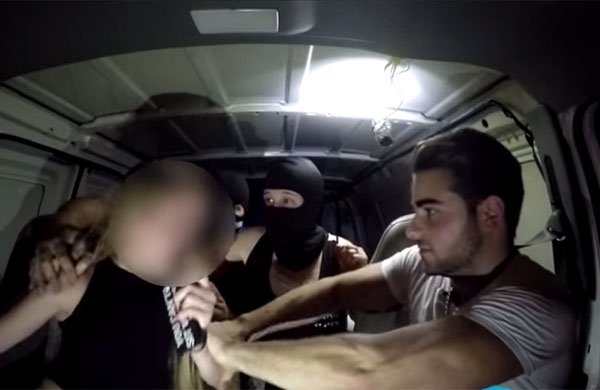 When called on to teach a class on genealogy to seniors as part of their Sephardic history class at Yeshiva of Flatbush High School, I was excited. This was an opportunity to help students see their connection to our rich Sephardic heritage.
When called on to teach a class on genealogy to seniors as part of their Sephardic history class at Yeshiva of Flatbush High School, I was excited. This was an opportunity to help students see their connection to our rich Sephardic heritage.
The majority of the students were from our community, Syrian and/or Sephardic Jews. Some, like my family, had ancestors who came to America in the early 20th century. Others came due to the persecution of Jews in Arab countries after the State of Israel was created. Still others were the Syrian ‘new immigrants,’ who came in the airlift of 1992. Once almost entirely Syrian, the community is now a mix of Turkish, Moroccan, Persian, Lebanese and Syrian Jews, the former Ottoman Empire.
Jewish subjects in the Ottoman Empire were dhimmi, a protected class, permitted to practice their religion in autonomous communities. As dhimmi, Jews had no vital records—no birth, death or marriage records. Community records, such as those kept by individual rabbis, were handed down in families.
 During the past several years, I successfully completed the translation and databasing of 7,550 circumcision records from the Dayan Mohels in Aleppo, as well as 1,300 or so marriage records, some burial and business records (see sephardicgen.org). This was a good source of information for the students. Also, I had researched family trees for many of the community’s prominent families, including Chief Rabbi Shaul J. Kassin, and Rabbi Ezra Labaton, whose families I traced back to Spain. Hence, my students had a tough—but not impossible—road ahead of them.
During the past several years, I successfully completed the translation and databasing of 7,550 circumcision records from the Dayan Mohels in Aleppo, as well as 1,300 or so marriage records, some burial and business records (see sephardicgen.org). This was a good source of information for the students. Also, I had researched family trees for many of the community’s prominent families, including Chief Rabbi Shaul J. Kassin, and Rabbi Ezra Labaton, whose families I traced back to Spain. Hence, my students had a tough—but not impossible—road ahead of them.
According to teacher Ms. Wielgus, “I wanted to make our subject, the history of Sephardic Jewry, relevant and meaningful to the students in the class. It’s one thing to learn about the history of Sephardic communities in the abstract and another to see how your very own family fits into that history and what role family members played in communal life. Many of my students barely knew even the basic facts about their ancestors, where they lived, what they did for a living, when and why they came to America, etc.! They also took it for granted that they are part of the Sephardic community without really understanding/appreciating what that means. I wanted to kindle passion and pride in the students for their histories and legacies. I want them to see and feel that they are living links in a rich and glorious chain of transmission.”
I taught the students interviewing techniques, how to find and label photographs, use Internet databases, as well as provide Sephardic history, Torah sources for genealogy, and how to enter their data and then link it to the leaves that popped up on Ancestry.com. I had the students’ interview family members and write an article on their family history. I wanted the students to understand that a family tree is not just about the data, it’s about the stories, the experiences, photos and family traditions. These are what bring the family trees alive.
 The students were asked to find the old suitcase or box hidden inside their homes with old photos and documents. Ketubot and marriage certificates, naturalization records were all important sources of information. Students had to find out the reasons for immigration, who sponsored them, how they earned a living in the old country and when they arrived. Where did they live and with whom did they live and for how long? For this, they also needed to understand how their ancestors lived in their countries.
The students were asked to find the old suitcase or box hidden inside their homes with old photos and documents. Ketubot and marriage certificates, naturalization records were all important sources of information. Students had to find out the reasons for immigration, who sponsored them, how they earned a living in the old country and when they arrived. Where did they live and with whom did they live and for how long? For this, they also needed to understand how their ancestors lived in their countries.
“It was amazing to see the documents that brought my family history to life,” said Jacqueline Tawil. “It led me to a distant relative who wants to publish an extended version of the family tree.”
We went through NY cemetery databases, city marriage records, newspaper archives, city directories, JewishGen, Ellis Island, sephardicgen.com and Farhi.org databases. I pulled out books from the Syrian communities in Mexico City, Manchester, and Buenos Aires, as the Syrian communities in these cities are linked to ours in Brooklyn. We talked about the meaning of their surnames and the use of double surnames in Syria and how siblings of the same family may have different surnames.
“I was proud to see where my family came from and what they overcame to be where they are today,” said Raquel Zalta.
 Ms. Wielgus said, “Many of the students told me how much they got out of the project. They learned so much about their families histories. A few students are now in contact with other branches of their families and are filling in gaps in their trees. I’ve also had a number of seniors who are not in my elective class ask me to introduce this project in all the senior classes because they heard about it from students in the elective classes.”
Ms. Wielgus said, “Many of the students told me how much they got out of the project. They learned so much about their families histories. A few students are now in contact with other branches of their families and are filling in gaps in their trees. I’ve also had a number of seniors who are not in my elective class ask me to introduce this project in all the senior classes because they heard about it from students in the elective classes.”
The results were amazing projects and beautiful family trees. Any genealogist knows that once you become hooked on your family history, the process is organic. As a genealogist, my job is to assure my community’s genealogical history is recorded so that future generations know how they are connected to the past.



